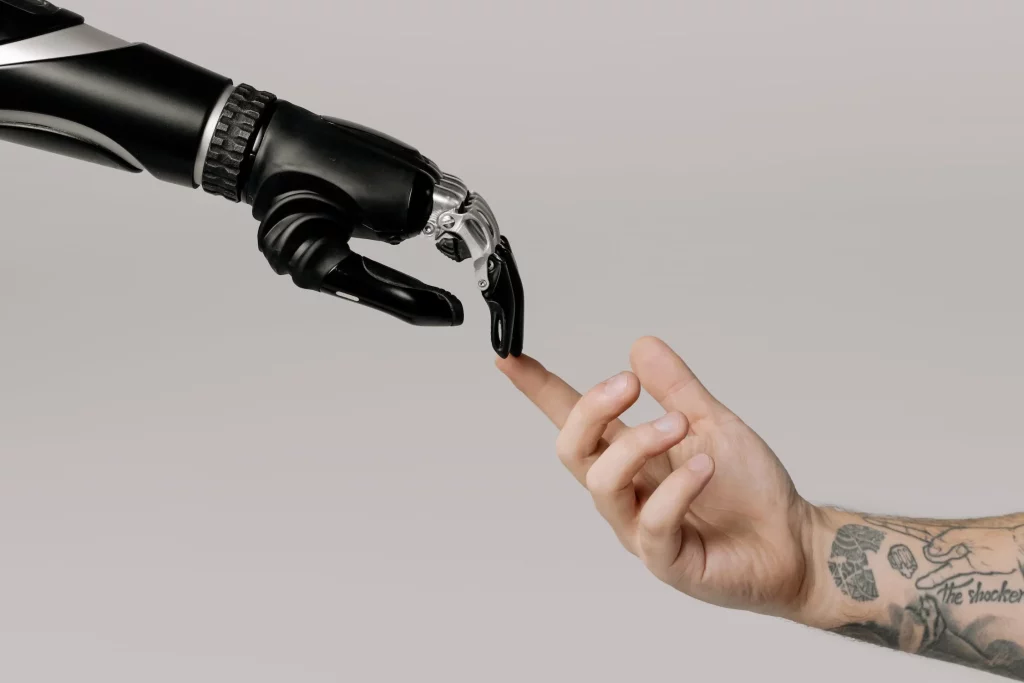n today’s fast-paced marketplace, understanding consumer psychology is crucial for brands looking to forge deeper connections with their audiences. As we navigate through, several key trends are emerging that shed light on the complexities of consumer decision-making. This expanded article dives deeper into the dynamics of consumer psychology, examining how economic factors, digital influences, and evolving preferences are shaping purchasing behaviors in more nuanced ways.

Section 1: The Evolving Landscape of Consumer Behavior
1.1 Trading Down While Splurging Selectively
Consumer behaviors are becoming more divergent, reflecting a paradoxical “world of ands” where people are both cost-conscious and willing to splurge selectively. McKinsey’s recent research shows that while about 66% of consumers are opting for cheaper brands or private-label products due to economic pressures, 44% still plan to indulge in premium items, especially those providing immediate gratification or unique experiences, such as dining out or travel. This dual approach is particularly noticeable among younger consumers like Gen Z and Millennials, who are more likely to both economize and spend on special experiences.
For instance, 77% of Indian consumers express a strong intent to splurge, compared to only 26% of Japanese consumers, reflecting different levels of economic optimism across regions. This “trading down” combined with selective indulgence illustrates how consumers manage their spending by balancing value-seeking behaviors with occasional luxuries, making it essential for brands to understand these dynamics and segment their strategies accordingly.
1.2 Omnichannel Shopping and the Desire for Seamless Experiences
Today’s consumers are engaging across multiple platforms, utilizing at least three channels for their purchase journeys, such as online stores, social media, and physical outlets. Despite the desire for a seamless omnichannel experience, only 25% of consumers are satisfied with the current offerings. Brands that succeed in integrating online and offline experiences, like Starbucks, which merges mobile ordering with in-store pickup, are more likely to foster customer loyalty. Omnichannel consumers are at least 1.25 times more valuable than their single-channel counterparts, emphasizing the importance of an integrated approach to retail.
1.3 Finding Comfort in Familiarity While Exploring New Brands
While established brands saw significant growth during uncertain times, such as a 50% increase for big brands in the U.S. at the height of the pandemic, there is also a trend of “brand promiscuity,” where consumers are more open to trying new brands. This trend is particularly strong among Gen Z and Millennials, who are five times more likely to believe that newer brands offer better or more innovative products. As a result, consumers now buy a repertoire of products to meet different needs, such as different types of milk (e.g., cow’s milk, almond milk) for varied uses.
1.4 Demanding Both Sustainability and Affordability
Sustainability is becoming a critical factor in purchase decisions, with 84% of consumers considering it essential. However, economic constraints have led to 50% of consumers feeling unsure about paying premiums for sustainable products. This presents a challenge for brands to balance their sustainability efforts with affordability. Products making sustainability-related claims are growing faster than those that do not, highlighting the need for businesses to communicate their sustainability practices clearly while also offering competitive pricing.
Section 2: The Impact of Digital and Social Media on Consumer Psychology
2.1 The Role of Online Research in Decision-Making
Digital platforms are now central to the consumer decision-making process, with 65% of consumers researching products online even if they intend to purchase in-store. A strong digital presence, such as optimizing for SEO and leveraging content marketing, helps brands position themselves as trusted sources of information. For example, global search interest in terms like “best time to buy” has increased, indicating consumers’ heightened focus on research to make informed decisions.
2.2 Social Media Engagement and the Power of Influencers
Social media significantly influences consumer preferences, especially among younger demographics. 31% of consumers are influenced by targeted ads, a figure that rises to 43% among Gen Z. Influencer marketing, particularly through micro-influencers, has become a powerful tool for brands to build credibility and trust. For instance, Gymshark’s strategy of partnering with fitness influencers has helped create a strong community and drive sales, showing how digital engagement can significantly impact brand loyalty.
Section 3: Economic Factors and Shifting Consumer Sentiments
3.1 Navigating the Cost of Living Crisis
With economic challenges persisting, consumer sentiment is shifting towards supporting local businesses, with many prioritizing local shops for holiday shopping. Research from Capgemini indicates that 77% of organizations found their sustainability efforts increased customer loyalty, and 63% saw a revenue uptick since implementing these practices. Brands that demonstrate care and empathy, especially during difficult times, are likely to build long-term loyalty.
3.2 The Rise of Direct-to-Consumer (D2C) Models
D2C models are reshaping the retail landscape, with 63% of consumers having purchased directly from brand websites. This trend allows brands to maintain control over their pricing, branding, and customer relationships, enabling them to offer personalized experiences. D2C brands like Casper and Allbirds have successfully disrupted their markets by emphasizing unique value propositions, such as sustainable materials or superior customer service.

Section 4: The Role of Sustainability and Ethical Consumption
4.1 Increasing Demand for Secondhand and Off-Brand Products
Sustainability concerns and economic constraints have fueled a rise in secondhand shopping, with online conversations about secondhand products up by 21% in 2023. Consumers are also turning to off-brand products, with a 11% increase in discussions over the past year. Despite some negative sentiment around the quality of these products, they remain a popular choice for those looking to balance affordability with sustainability.
4.2 Challenges and Opportunities in Sustainable Practices
While sustainability remains a priority, brands face challenges in convincing consumers to pay more for sustainable products amid inflation. Nevertheless, companies like Unilever and IKEA have successfully balanced sustainability initiatives with affordability, proving that it is possible to offer eco-friendly options at various price points.

Section 5: Future Directions in Consumer Psychology
As consumer behavior continues to evolve in response to technological advancements, economic shifts, and changing social values, several key trends are likely to shape the future of consumer psychology. These trends offer brands new opportunities to engage with their audiences more effectively and anticipate their needs.
5.1 The Rise of Personalization and Predictive Analytics
Personalization is increasingly becoming a critical factor in consumer engagement and loyalty. Brands are leveraging artificial intelligence (AI) and machine learning to gain deeper insights into consumer behavior and preferences, enabling them to tailor their products, services, and marketing efforts more precisely. According to a report by Accenture, 91% of consumers are more likely to shop with brands that provide relevant offers and recommendations based on their personal preferences(Think with Google).
Predictive analytics allows companies to anticipate consumer needs and offer personalized experiences at scale. For instance, platforms like Netflix and Amazon use sophisticated algorithms to suggest content or products based on previous behavior, improving the customer experience and driving higher engagement and sales. As AI technologies advance, this trend is expected to grow, with brands utilizing data to create hyper-personalized marketing strategies and product recommendations that resonate with individual consumers.
5.2 Embracing the Omnichannel Approach
The future of consumer psychology will also be shaped by the continued blending of online and offline shopping experiences. The “phygital” (physical + digital) shopping experience is becoming increasingly important as consumers use multiple channels throughout their purchase journeys. With 65% of consumers researching online even when they plan to buy in-store, and 59% visiting stores to see products before purchasing online, brands must focus on providing a seamless, integrated experience across all touchpoints(Think with Google).
This omnichannel approach is not just about being present in multiple channels but ensuring that each channel works cohesively to support a smooth and enjoyable customer journey. Brands that excel in this area can significantly enhance customer satisfaction and loyalty, as consumers increasingly expect frictionless transitions between online and offline shopping environments.
5.3 Growing Focus on Ethical Consumption and Sustainability
Consumers are becoming more conscious of the ethical implications of their purchasing decisions. Even though economic constraints may limit their ability to pay premiums for sustainable products, there is still a strong demand for brands to demonstrate their commitment to sustainability. According to a survey by Capgemini, 77% of organizations found that their sustainability efforts increased customer loyalty, and 63% reported a rise in revenue as a result(Brandwatch).
As the effects of climate change become more apparent, consumers will likely prioritize brands that can balance sustainability with affordability. Companies that transparently communicate their sustainability practices, reduce their carbon footprint, and support social causes will be better positioned to attract and retain environmentally and socially conscious consumers.
5.4 The Expansion of the Secondhand and Circular Economy
The rise of the secondhand market and the circular economy is set to continue shaping consumer behavior. The resale market, particularly in fashion, is growing rapidly, with a projected market value of $43 billion for luxury goods in 2022, double what it was five years earlier(Brandwatch). Consumers, especially younger generations, are increasingly turning to secondhand products to balance affordability and sustainability.
This trend presents an opportunity for brands to enter the resale market or develop circular business models that encourage recycling and reuse. By tapping into this demand, brands can not only meet consumer expectations for sustainable practices but also build stronger relationships with customers who prioritize both environmental impact and cost-effectiveness.
5.5 Adapting to Generational Shifts
Understanding generational differences in consumer behavior will be crucial for brands moving forward. Millennials and Gen Z, who prioritize digital engagement, authenticity, and sustainability, differ significantly from older generations, who may place more emphasis on brand loyalty and quality. To engage effectively with these diverse audiences, brands must adopt a multi-faceted approach that reflects the unique values and preferences of each generation(Think with Google).
For example, Gen Z is more likely to respond to interactive content, such as social media challenges and gamification, while older generations might prefer traditional advertising methods that emphasize product reliability and value. By creating targeted campaigns that resonate with different generational values, brands can build stronger, more meaningful connections with their customers.

5.6 Leveraging New Technologies for Enhanced Customer Experience
Emerging technologies like augmented reality (AR), virtual reality (VR), and voice search are set to transform the way consumers interact with brands. AR and VR offer immersive experiences that allow consumers to visualize products in their own environments or try them virtually before purchasing, which can enhance decision-making and reduce return rates. Voice search, powered by smart assistants like Alexa and Google Assistant, is changing how consumers search for and purchase products, necessitating new SEO and content strategies for brands.
As these technologies become more widespread, brands that invest in integrating them into their customer experience strategy will have a competitive edge. By leveraging these innovations, brands can offer more interactive, engaging, and personalized experiences that cater to the evolving expectations of today’s tech-savvy consumers.
Conclusion: Navigating the Future of Consumer Behavior
The future of consumer psychology will be defined by a blend of personalization, ethical considerations, generational shifts, and technological advancements. To thrive in this dynamic landscape, brands must remain agile, continually adapting to new trends and consumer preferences. By embracing innovation, enhancing personalization, and staying attuned to the values and behaviors of their audiences, brands can build meaningful, lasting relationships and secure a competitive advantage in the marketplace.
Conclusion: Embracing the Complexity of Consumer Psychology
In 2023, consumer psychology is marked by a diverse and sometimes contradictory set of behaviors and preferences. The convergence of economic pressures, digital advancements, and shifting values has created a consumer landscape that is complex and ever-evolving. Consumers are demonstrating dual tendencies, such as trading down while selectively splurging, seeking both comfort in familiar brands and exploring new ones, and demanding both sustainability and affordability in their choices.
Brands that successfully navigate this landscape understand the importance of agility and responsiveness. They prioritize building seamless omnichannel experiences, leveraging digital tools, and engaging with consumers in personalized and authentic ways. At the same time, they balance sustainability efforts with economic considerations, recognizing the growing importance of ethical consumption even amid financial constraints.
To thrive in this complex environment, brands must focus on understanding the nuanced needs of their consumers, utilizing data-driven insights, and fostering genuine connections. By embracing these complexities and innovating to meet evolving consumer expectations, businesses can position themselves for sustainable growth and long-term loyalty.
Ultimately, the key to success lies in recognizing that today’s consumers live in a world of “ands” rather than “ors” — they want value and quality, sustainability and affordability, convenience and engagement. Brands that embrace this duality and adapt to these shifts will not only survive but also prosper in the competitive marketplace of tomorrow(McKinsey & Company)(Think with Google)(Brandwatch).




